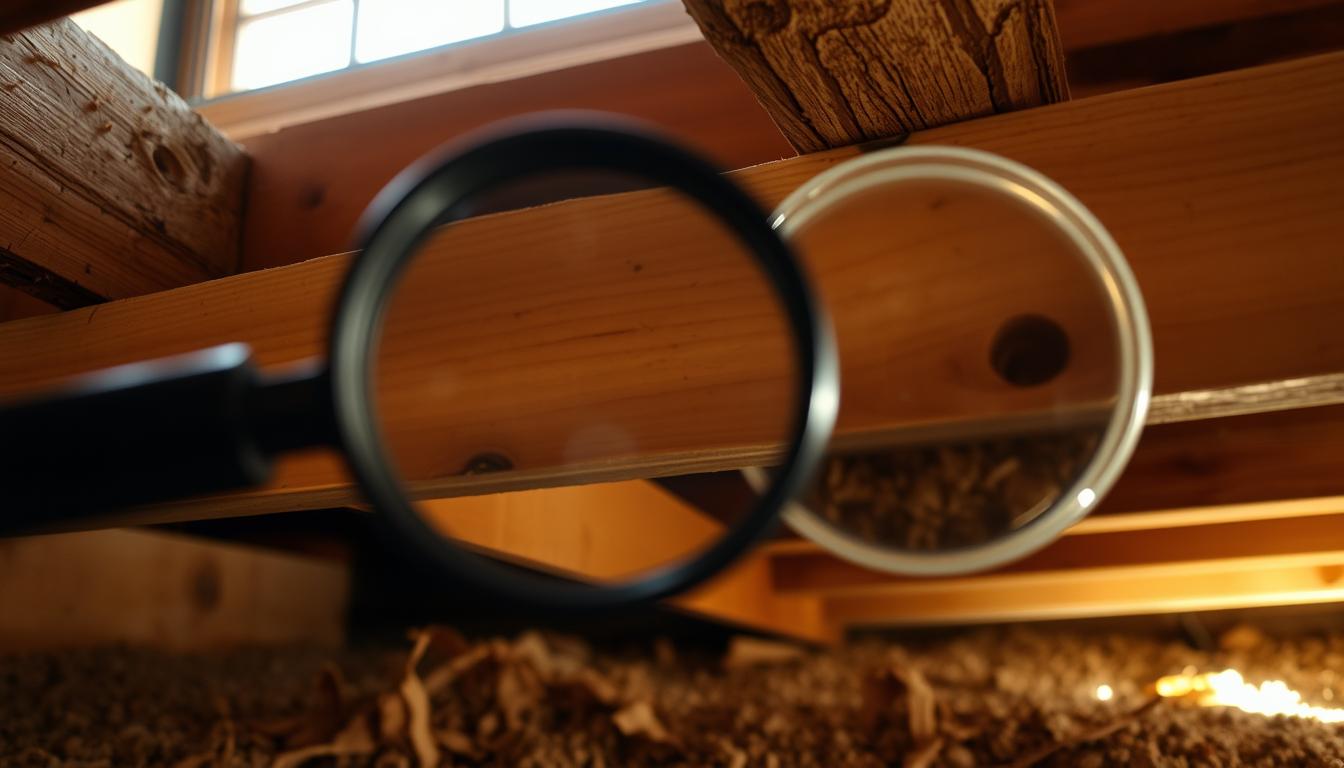Termites are a big problem for homeowners in San Diego. They cause about $5 billion in damage in the U.S. every year. It’s important to get regular termite inspections to protect your home and keep its value high.
These inspections check your home inside and out for signs of termites. Inspectors look for mud tubes, damaged wood, and other signs of termites. They also check places like attics, crawl spaces, and foundations to make sure your home is termite-free.
Key Takeaways
- Regular termite inspections are crucial for protecting your San Diego home from costly damage.
- Inspections involve a comprehensive examination of your property to identify signs of active infestations or risk factors.
- Professionals look for visual evidence like mud tubes, damaged wood, and discarded wings to detect termite activity.
- Early detection is key to preventing extensive damage and maintaining your property’s value.
- Experts recommend a healthy interval of two years between termite inspections to ensure your home’s ongoing protection.
Signs of Termite Inspection Need
It’s important to watch for signs of termites to protect your San Diego home. Look for visual clues and environmental factors that might attract termites. Knowing these signs can help you act fast and avoid big damage.
Visual Evidence and Warning Signs
Watch for swarms of winged insects near windows or doors. These are likely termite swarmers. Also, look for mud tubes on walls or foundations, hollow wood when tapped, and discarded termite wings near entry points.
Piles of fecal pellets near baseboards and surface blisters on wood are other signs. These blisters are caused by termite tunnels or “galleries”.
Environmental Risk Factors
San Diego’s climate is perfect for termites, especially in August, September, and October. Termites love moist places, so areas with water damage or poor drainage are at risk. Wood-to-soil contact, cracks in the foundation, and unsealed gaps also attract termites.
Moisture issues like leaky pipes are another risk. Both subterranean and drywood termites are common in Southern California. So, it’s important to stay alert.
Getting an annual termite inspection is key to preventing infestations. Inspectors look for signs of past and current termites, and weak spots. By catching these issues early, you can protect your home and avoid expensive repairs later.
Professional Termite Inspection Process in San Diego
In San Diego, homeowners worried about termites can count on pest control pros for detailed termite inspections. These checks cover the whole house inside and out. Inspectors know how to spot signs of termites.
Experts look for mud tubes, damaged wood, and where termites might get in. They use special tools like moisture meters and borescopes to check hidden spots. After the check, you’ll get a report showing any termite signs or risks.
A typical home pest inspection in San Diego costs between $75 and $150. Many termite control services give free checks. It’s key to pick licensed pros who know San Diego’s climate well.
| Inspection Cost | Termite Treatment Options | Inspection Frequency |
|---|---|---|
| $75 to $150 | Chemical barriers, bait systems | Every 3 to 5 years |
Getting regular termite checks can save you a lot of money. It helps catch problems early. Working with trusted professional pest control experts in San Diego keeps your home safe and sound.
“Termite inspections are crucial in preventing extensive structural damage caused by termites.”
Conclusion
Regular termite inspections are key to protecting San Diego homes from costly damage. Early detection through professional inspections can save homeowners thousands. Preventive steps include removing wood-to-ground contact and sealing entry points.
Eliminating moisture issues and keeping wood piles away from the house also helps. While DIY methods exist, professional pest control services are more effective. They can eliminate and prevent termite infestations.
Annual inspections are recommended, especially in termite-prone areas like San Diego. By staying vigilant and investing in regular inspections, homeowners can protect their properties. Regular termite inspections provide early detection and peace of mind.
They also offer cost savings and proactive measures to maintain your home’s structural integrity. Protecting your property from termites is crucial for San Diego homeowners. Scheduling regular inspections with a trusted pest control company like Termite Control San Diego is essential.
It helps detect and address termite issues before they cause significant damage. Take the necessary steps to safeguard your most valuable investment. Enjoy the benefits of a termite-free home for years to come.
FAQ
What are the signs that indicate a termite inspection is needed in San Diego?
How do professional termite inspections in San Diego typically work?
How much does a termite inspection typically cost in San Diego?
How often should homeowners in San Diego have their homes inspected for termites?
What are the benefits of regular termite inspections in San Diego?
Source Links
- https://www.lloydpest.com/blog/termite-season-termite-warning-signs-and-termite-prevention/
- https://homeguard.com/termite-inspection-in-san-diego/
- https://www.mightymitetermite.com/blog/what-to-expect-from-an-inspection-and-how-to-prepare/
- https://www.thisoldhouse.com/pest-control/reviews/termite-inspections
- https://www.trianglepest.com/blog/6-signs-you-might-need-termite-home-inspection
- https://www.agpest.com/what-you-should-know-about-a-termite-inspection/
- https://www.hi-techtermitecontrol.com/termite-inspections.html
- https://www.fullscopepestcontrol.com/complete-guide-to-termite-inspection/
- https://linkhorninspections.com/blog/do-you-really-need-a-termite-inspection-when-buying-a-home/
- https://www.gunterpest.com/news/do-i-need-a-termite-inspection/

Leave a Reply